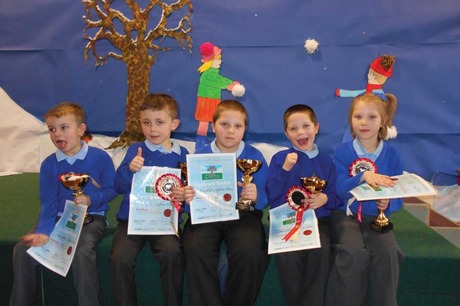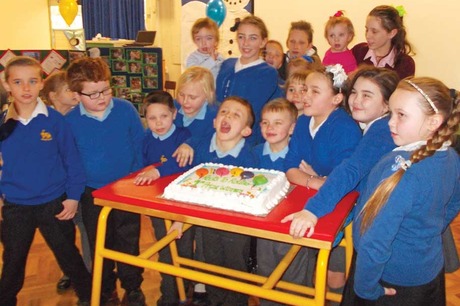Traveller culture and heritage. Gabriella Jozwiak finds out how the project has increased engagement among the local community.

The term 'Traveller community' is often used to describe a population of about 300,000 UK residents that span several different groups. These include Irish, Scottish, Welsh and new Travellers, Gypsies, Roma, bargees (who traditionally live and work on waterways) and fairground or circus Travellers.
Some of these communities have migrated to the UK over the past 500 years, while others have been British for much longer. Traditionally, they have been defined by their nomadic lifestyles; however, Government research from 2011 suggests that only a quarter now live in caravans or mobile homes.
These groups have always been surrounded by myths that perpetuate negative attitudes towards them. These include beliefs that Travellers are dirty, invade communities, are criminals and don't pay taxes. In 2004, the chairman of the Commission for Racial Equality said: 'Discrimination against Gypsies and Travellers appears to be the last "respectable" form of racism.'
Children from these communities face particular challenges in education. This is partly because of difficulties accessing schools if they move frequently, but also because of distrust felt by some parents towards formal schooling.
According to the 2011 national UK Census, the group is the worst educated of any ethnicity, with 60 per cent of adults having no qualifications, compared to 23 per cent for the rest of the population. Traveller parents who had bad experiences of school can be reluctant to engage with local services.

FIRST PRIZE
In the London Borough of Hillingdon, Harefield Infant, Nursery and Children's Centre is targeting services towards its local traveller community. The school won first prize in a competition organised by the National Association of Teachers of Travellers + Other Professionals (NATT) for its work throughout Gypsy Roma Traveller History Month in June last year. The efforts have also resulted in improved outcomes for Traveller pupils in Key Stage 1.
The work at Harefield is led by outreach worker Sally Barter, who has worked part time at the children's centre since autumn 2009. She is a member of the local traveller community, which is mainly made up of English Romany and fairground people. Ms Barter formerly worked for Hillingdon Council as a traveller education team worker. As a parent of children at the school and a former pupil herself, teachers asked her to help reach out to the local traveller community.
Ms Barter began by inviting traveller community women to visit the centre, but the first attempt failed as only two women attended (one of whom was her sister-in-law). 'It was too formal,' she says. Instead, she organised a lunch that attracted 15 women. Ms Barter made sure the women felt at home by serving them tea in similar cups and mugs to those they would use. 'A big thing about our culture is fancy china, so we have mugs and cups made of pottery that you can buy at our fairs,' she says.
For the first two years, Ms Barter focused on building relationships with mothers before introducing child-only focused activities. It was important for activities to be user-led to ensure the women kept returning. The first project at the centre was a first aid course. This progressed to five-week courses on sewing, IT and dancing. The centre also invited professionals, such as an immunisation nurse, to engage with the women.
Ms Barter says it took two years to win the women's confidence. Once they felt comfortable, one admitted to being unable to support her daughter with her homework because her literacy skills were low. Ms Barter responded by running courses to help mothers understand their children's education. She says this is important, because traveller parents commonly have four to eight children.

ROOTS AND ROUTES
Last year the school ran a specific course for families to coincide with a competition held during Traveller History Month. The group used the theme Roots and Routes to explore its heritage.
'Traveller culture and lifestyle is based on an oral tradition rather than what's written down,' explains Ms Barter. 'They went out and spoke to their grandparents about what it was like when they were children, then we compared that to how it is today.'
The culture of travellers in Harefield is traditionally based around horses. 'Travellers used to depend on a horse to pull a wagon,' says Ms Barter. 'Most families now, even if they don't have horses, go to horse fairs.'
The group decorated a box to look like a wagon and called it 'our box of pride'. They filled it with items relevant to their culture such as pictures, postcards, flyers, songs and paper plates decorated to look like Royal Crown Derby - travellers' prized crockery.
The children also prepared individual workbooks containing stories, pictures and information about their identities as travellers.
The school celebrated its win by holding an awards ceremony assembly. This was attended by the local mayor, professional Gypsy storyteller Richard O'Neill, and Traveller children from other schools. The event attracted fathers and grandfathers from the Traveller community, who are typically hard to engage.
This year, the school plans to ask Traveller children to bring a non-Traveller friend to Traveller parent-and-child sessions, to further integrate the community. Ms Barter has noticed that the project has already resulted in Traveller mothers forming relationships with non-Traveller mothers. They are also being encouraged to access other children's centre services, such as housing, citizen's advice and midwives.
Ms Barter believes early years settings and schools can find targeting Traveller communities challenging because they are afraid of making mistakes. And, she adds, prejudice is a problem.
'Teachers and education staff are not immune to that - it's not realistic to think they are,' she says. 'But there is no reason why these communities shouldn't be acknowledged.'

ENGAGING FAMILIES
In the nursery
- Buy Traveller-themed resources such as books, posters and toys available from NATT.
- Turn the home corner into a trailer or wagon during Traveller History Month.
- Run a Traveller-themed art session, such as decorating paper horse shoes or Royal Crown Derby plates,
- Adapt well-known nursery songs to include Traveller references - for example The Wheels on the Wagon rather than The Wheels on the Bus.
For parents
- Traveller parents may not be keen to send children on school trips - consider letting them join you.
- Be understanding of Traveller children's absences to travel to fairs or for parents' work.
- Use verbal communication or short written communications, as Traveller parents can have low literacy.
- Female groups will respond better to training delivered by female professionals.
- Be prepared for change to happen slowly; it can take years to build confidence within a Traveller community.
FACTS AND FIGURES
- Gypsies and Travellers have existed in Britain for hundreds of years, but were only officially recognised as an ethnic group by the UK National Census in 2011. This offered a tick box for Gypsy or Irish Travellers, but not Roma.
- The number of people who identified themselves as Gypsy or Irish Travellers in the census was 57,680, but Traveller groups say many hid their ethnicity to avoid racist reactions. The Government estimates the UK population to be 300,000.
- According to the census data: 39 per cent of the Gypsy population were under the age of 20, compared to 24 per cent for the entire population; 20 per cent were listed as unemployed, compared to 7 per cent for the whole population; and 45 per cent of Gypsy and Traveller families had dependent children, compared to 29 per cent of the rest of the country.
- Most Gypsies and Travellers (61 per cent) live in houses or bungalows, and 15 per cent in flats, while just 24 per cent live in caravans or mobile homes.
- Several different languages are spoken by Traveller communities groups, including English, Romani, Cant or Shelta, and Polati (a slang).
- Department for Communities and Local Government data published in 2011 suggested the highest concentration of Gypsy and caravan sites were in the East of England (24 per cent).
RESOURCES
Available from bookseller www.robertdawson.co.uk are:
- My Wonderful Place: the story of a journey to Appleby Fair by Sally Barter.
- My Year by Cassie Jones and David Johnstone.
- Spotting Old Vardos by Robert Dawson.
- Tales from the Trailers: Uncle Walter by Barbara Walsh
- Young Children's Colouring Book 1, ages 4-7.
Available from NATT e-shop, at www.eshop.natt.org.uk/eshop/index.php are:
- First Gypsy Alphabet by Tim Beevers.
- Gypsy Roma Traveller Poster by Ferdinand Koci.
- Here Comes the Fair teaching pack by Ahmed Iqbal Ullah Education Trust.
Members of NATT can download resources from its website, including an early years newsletter (see www.natt.org.uk/national-strategies-docs).
Richard O'Neill, storyteller, is at www.richardthestoryteller.weebly.com.
MORE INFORMATION
- Advisory Council for the Education of Romany and Other Travellers, www.acert.org.uk
- Building Futures, Developing Trust: a focus on provision for children from Gypsy, Roma and Traveller backgrounds in the Early Years Foundation Stage, DCSF (2009), webarchive.nationalarchives.gov.uk/ 20130 401151715/https://www.education.gov.uk/publications/ eOrdering Download/00741-2009BKT-EN.pdf
- Circus Parents Association, www.natt.org.uk/organisation/circus-parents-association
- Friends, Families and Travellers, www.gypsy-traveller.org
- Gypsy Council, www.gypsy-association.co.uk
- Milen - bilingual story books and resources, including in Roma, www.bilingualbooks.eu
- NATT, www.natt.org.uk
- Resource to support inclusive practice training, www.savethechildren.org.uk/resources/online-library/ working-towards-inclusive-practice-training
- Roma Education Support Trust, www.opreroma1.webs.com
- Traveller History Month, www.grthm.natt.org.uk
- Travellers' Times, www.travellerstimes.org.uk.









